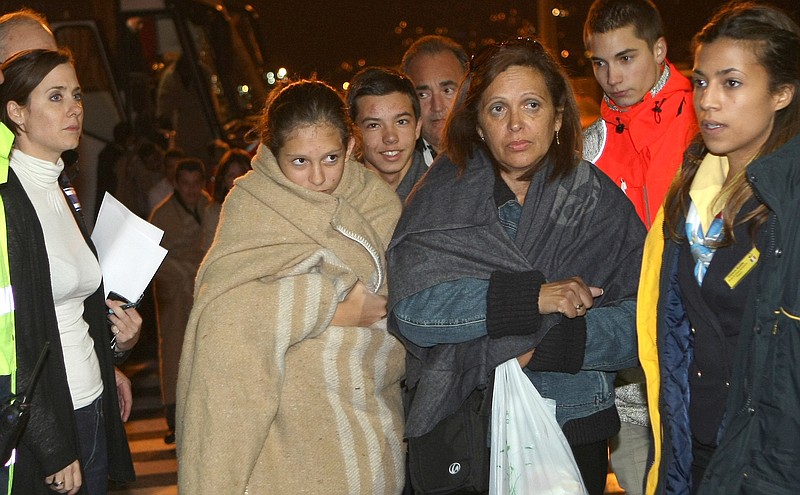WASHINGTON (AP) - The luxury cruise liner that ran aground off the Italian coast has rattled even the most die-hard "cruisers" in an industry where catastrophic accidents are rare, but it's unlikely to do significant long-term damage.
The Costa Concordia hit a reef, tearing a massive gash into its hull and sending in a rush of water that caused it to tip over. The ordeal was described by many of the 4,234 people aboard as something akin to scenes from the film "Titanic." At least three people died, and dozens remain unaccounted for.
Disasters of this magnitude don't strike often, especially considering the number of passengers traveling on cruise ships each year. The Cruise Lines International Association, an industry trade group, says on its website that more than 15 million passengers traveled on its member cruise lines in 2010. That number was expected to climb to more than 16 million in 2011, CLIA said. The trade group counts 26 cruise lines among its members - including Costa and its parent company, Carnival Corp.
Industry observers said the disaster is unlikely to have a significant impact on cruise line travel.
"When a plane goes down, how many people stop flying?" said Stewart Chiron, who writes the blog Cruiseguy.com. "It's inevitable that a few people will be concerned, but I think most people understand that these things happen, and that the cruise industry as a whole has an incredible safety record."
Frequent cruise passengers were talking about the wreck on the website Cruisecritic.com, which counts about 700,000 members.
"Mostly it's shock and praying for the people on board," said the site's managing editor, John Deiner. He added there was "no real sense that they're going to stop cruising."
He also said, however, that it was too soon to tell exactly how the incident would affect bookings for future cruises. Furthermore, people who booked a trip aboard the Concordia may not know yet how the cruise line will handle their reservations.
Indeed the industry has grown significantly in recent years. According to CLIA, cruise lines set 12 new ships sailing in 2010, and added another 14 in 2011.
Carnival holds a large chunk of the cruise market - it says it carried nearly 50 percent of the world's cruise passengers in 2010. All told, there are 100 ships in the fleets of its various brands. The company is the parent of 10 cruise lines, among them Costa Cruises, Holland America Line, Princess Cruises and Carnival Cruise Lines.
The industry's capacity has grown at an annual rate of 5.7 percent from 2005 to 2010, according to Carnival's regulatory filings.
The full extent of Carnival's liabilities as a result of the Costa Corncordia accident remains to be seen. The company's insurance is a combination of self-insurance - a fund that it maintains for disasters - and policies with high deductibles, according to its financial disclosures.
"We are not protected against all risks, which could result in unexpected increases in our expenses in the event of an incident," the company's SEC filings say.
Some of Carnival's liability could be determined from the voyage data recorder, a device similar to a "black box" used to analyze a plane crash. The recorders allow investigators to review what happened just before an accident.
Jack Hickey, a Miami attorney who has practiced maritime law for 32 years, said Costa Cruises will likely face legal consequences for a whole host of reasons, including the captain of the Costa Concordia's apparent decision not to immediately issue a mayday call and inability to properly navigate the ship before it ran aground.
Costa said in its statement that the captain tried to prepare for an eventual evacuation, but that it was too difficult for passengers to get off because the ship tilted suddenly.
"If you are the captain of a ship carrying 4,000 people, you should know the waters you ply like the back of your hand," Hickey said. "There are obviously questions about that. It's one thing to get into problems, but you must react appropriately."
However, Hickey also said he doubted the accident would have a broad impact on the cruise industry.
"The cruise industry as a whole is pretty healthy, it's growing," he said. "It might affect bookings on Costa in the near term, certainly over the next year."
Safety standards for large passenger ships grew out of a convention in 1914, two years after the Titanic disaster. The rules eventually were adopted by the International Maritime Organization, an agency of the United Nations.
Among the requirements: Ships must have public address systems for announcements to passengers; lifeboats must be fully or partially enclosed; and ships must have evacuation chutes, similar to what airplanes have. Ships also must hold weekly "abandon ship" and fire drills.
International rules require that lifeboats be capable of being loaded, launched and maneuvered away from the ship within 30 minutes of the signal to abandon ship. The lifeboats apparently weren't accessible in this case because of the ship's rapid tilting.

